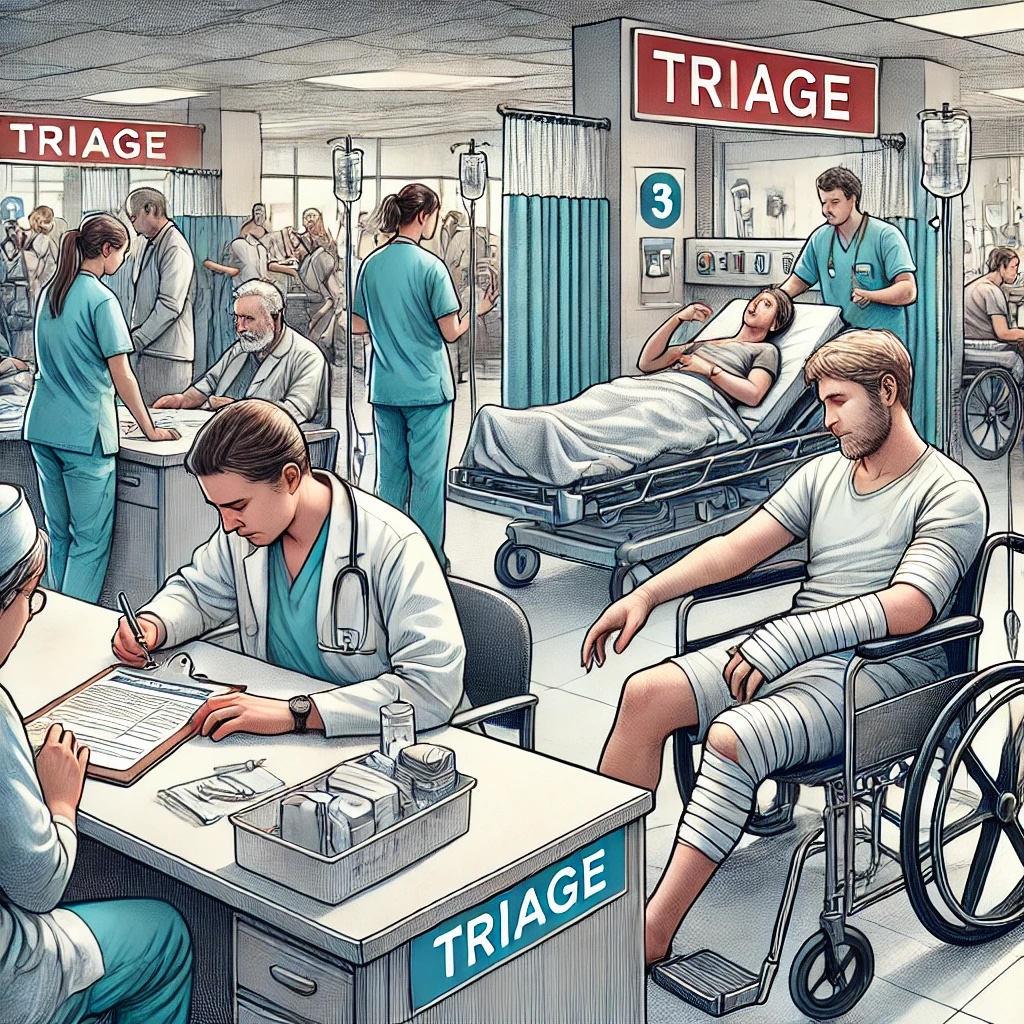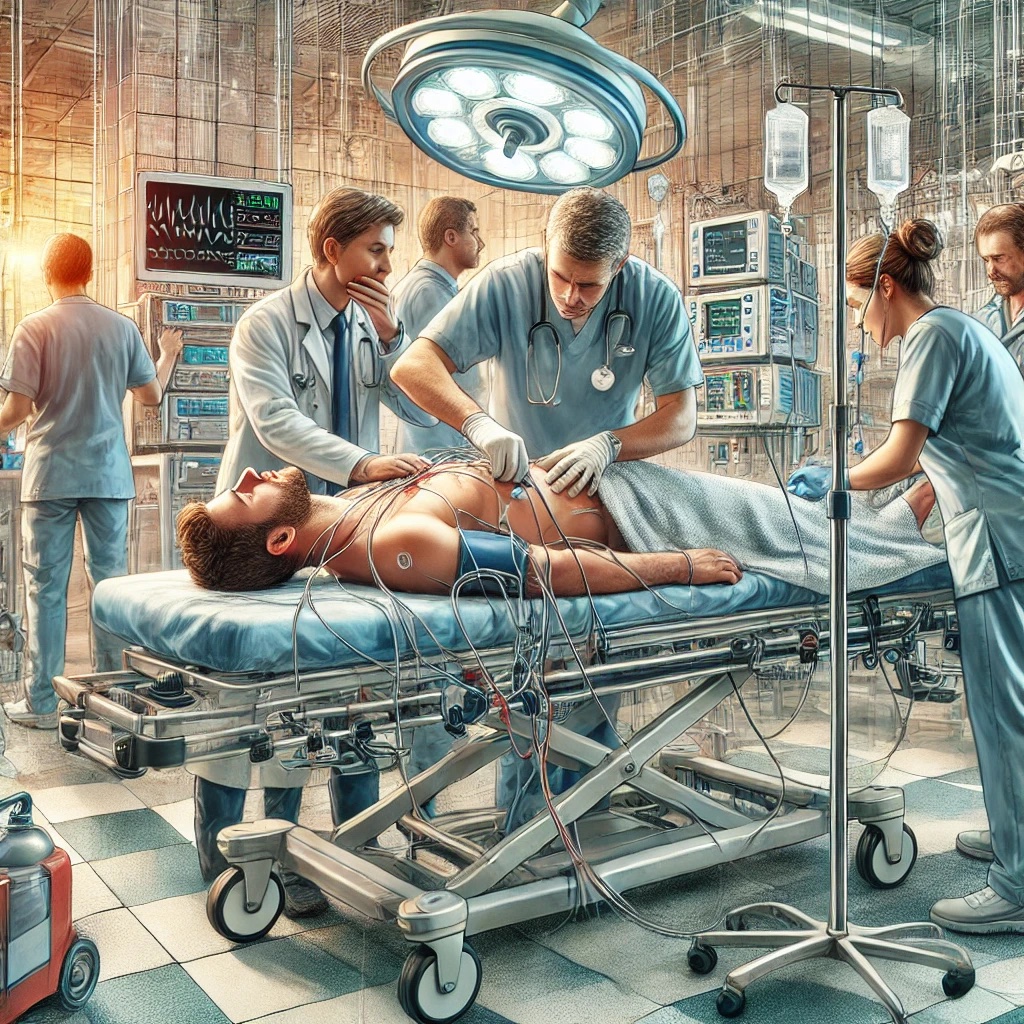Acute vs. Non-acute medical problems
The emergency room (ER) is a unique and critical healthcare facility that handles acute, life-threatening conditions. Operating 24/7, it provides immediate care to everyone in need. The ER’s specialization lies in treating severe and sudden acute conditions, such as heart attacks, strokes, severe injuries, and breathing problems. Its primary goal is to stabilize patients and address life-threatening situations.
It’s essential to understand the distinction between acute and non-acute conditions. Acute conditions are severe and sudden, such as heart attacks and severe injuries, while non-acute conditions are less severe, like minor aches. While capable of handling non-acute cases, the ER primarily focuses on acute, high-risk situations. This means that the sickest patients are given priority, regardless of their arrival order.
Seeing Patients in order
Overcrowding can slow down the ER process. More patients mean longer wait times. If the ER is full, staff must prioritize critical cases. Less urgent patients might stay longer. It’s important to understand that the ER aims to save lives, often meaning that non-acute cases receive attention after the acute ones. This should make sense, but consider if you are the more sick person. You would want it to be this way. The process by which this is decided is called triage.

The triage process in the emergency room involves quickly assessing patients’ conditions to prioritize care. Nurses evaluate symptoms, vital signs, and medical history to determine urgency. Critical cases receive immediate attention, while less severe cases may wait. This system ensures that the sickest patients receive timely and appropriate care.
Data collection and analysis in the ER can take time. Tests and studies may require three hours or more to complete. The doctor needs to analyze these results while attending to new patients. This multitasking can further delay the process, especially during busy periods. More patients needing studies will result in longer waiting times for results.
Regular vs. Emergency Care
Regular primary medical care differs from emergency care. The ER is not a substitute for your primary doctor. Your regular physician should handle routine check-ups, chronic condition management, and non-urgent health issues. Doing this helps keep the ER available for those in need of emergency care.
Visiting the ER for non-acute conditions can contribute to overcrowding, which affects everyone as more patients slow down the system. Understanding the ER’s role and limitations can improve your experience. The ER is there for you if you need immediate help with serious issues. For non-urgent matters, seek primary care to avoid unnecessary delays.
In conclusion, the ER is vital for addressing acute, life-threatening conditions. It’s always open and prioritizes the sickest patients first. However, it’s crucial to remember that it’s not a replacement for regular medical care. Using the ER wisely and understanding its role and limitations can help ensure it functions efficiently.
Copyright © 2025 William E. Franklin, DO, MBA
The information on this website (the “Site”) is for general informational purposes only. It is not a substitute for professional medical advice, diagnosis, or treatment. This disclaimer governs your use of the Site; by accessing and using the Site, you accept and agree to be bound by this disclaimer. If you disagree with this disclaimer, you should not use the Site.
No Medical Advice:
The content provided on the Site, including but not limited to text, graphics, images, videos, and other materials, is designed to offer general health and wellness information. It does not intend to provide medical advice about your condition or concerns. Always seek the advice of a qualified healthcare professional with any questions you may have regarding a medical condition. Never disregard professional medical advice or delay seeking it because of something you have read on this Site.
No Doctor-Patient Relationship:
Using this Site and transmitting information does not create a doctor-patient relationship between you and the Site’s owners, operators, or contributors. No recipient of information from this Site should act or refrain from acting based on any content included without seeking appropriate medical advice from a licensed professional.
Use at Your Discretion:
The Site is provided “as is,” and your use is at your own risk. While we strive to provide accurate and up-to-date information, we make no representations or warranties of any kind, express or implied, about the completeness, accuracy, reliability, suitability, or availability of the Site or the information, products, services, or related graphics contained on the Site for any purpose.
Third-Party Content and Links:
The Site may contain links to third-party websites or resources. These links are provided for your convenience and do not imply endorsement or recommendation of these third parties’ information, products, or services. We have no control over the content of linked sites. We are not responsible for any information, services, or products these sites provide. You access and use such third-party sites at your own risk.
Consult a Healthcare Professional:
If you have specific medical questions or concerns or require medical advice or treatment, please consult a qualified healthcare professional promptly. Never disregard professional medical advice or delay seeking it because of something you have read on this Site.
In summary, the information provided on this Site should not be considered medical advice and does not create a doctor-patient relationship. Your use of the Site is at your discretion, and you should always consult a qualified healthcare professional for personalized medical advice and treatment.

Comments
2 responses to “Is it a Medical Emergency?”
Question…..I have had continuous diarrhea since earlier this week on Monday. I have taken over the counter antidirrheals but still have diarrhea. When should I go to the er
Any time you think you have a life and/or limb threatening emergency, you should call 911 or go to your nearest emergency room.